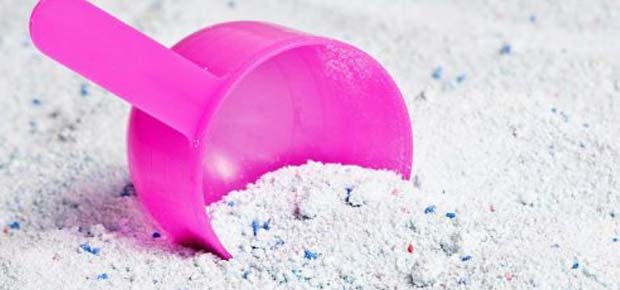Detergent fillers are the materials, which are added in detergents to alter their physical characteristics and properties. The objective of adding fillers to detergents is to make detergents fluid or to turn the fluidized detergents in powder form. Generally the fillers are bulk components in various detergents with their primary role to modify and alter the physical properties of the material.
We can also define detergent fillers as additives that can be added in detergents (along with bleaches, bleach activators, antistatic agents, fabric softners, optical brighteners and antiredeposition agents) to improve the cleansing performance.
Materials
The different materials that can be used as fillers in detergents, include
-

Borax can be used in solid detergents to make the detergent powder free-flowing. Alcohols can be added in liquid detergents to increase the solubility of compounds and to reduce the freezing point of mixture. The addition of anti-foaming agents help in lowering the production of foam thereby making the presence of detergents in wastewater less obvious. Sodium chloride or sodium sulphate can also be used as fillers. Sodium sulfate comes at an economical price and has some cleansing effect, especially when it is mixed with a cleansing agent. Corrosion inhibitors, such as sodium silicate can be added to increase the lifetime of the washing machines. Generally the usual content of fillers in detergents is about 5-45%.
Typically, a detergent is a mixture of various substances and is generally made by compounding the different ingredients, sometimes in the form of a slurry and is then spray-dried to yield free-flowing granules. A detergent contains following ingredients, in varying proportions, usually like -
Fillers in Cosmetics
Along with detergents, fillers are also widely used in soap and cosmetic products. In these products, fillers are used as binding agents, which are
used to give hardness to the soap cake, free-flowing properties to the powders, and more. Some of the applications include uses in talcum powder,
detergents and washing powder.
Applications
Detergent fillers have found uses in various applications, such as -

If you have decided to make soap at home, you will need soap making supplies in the form of raw materials, soap making equipment & tools ...
Read More
Someone has rightly said that clothes are not just clothes. They form an integral part of a person's personality and tell a lot about their nature and...
Read MoreCleansing products play an important role in the daily lives of people.
Both soaps and detergents are cleansing products that we frequently use in our
Soap is designed as a product to be used once and then flushed down the drain...